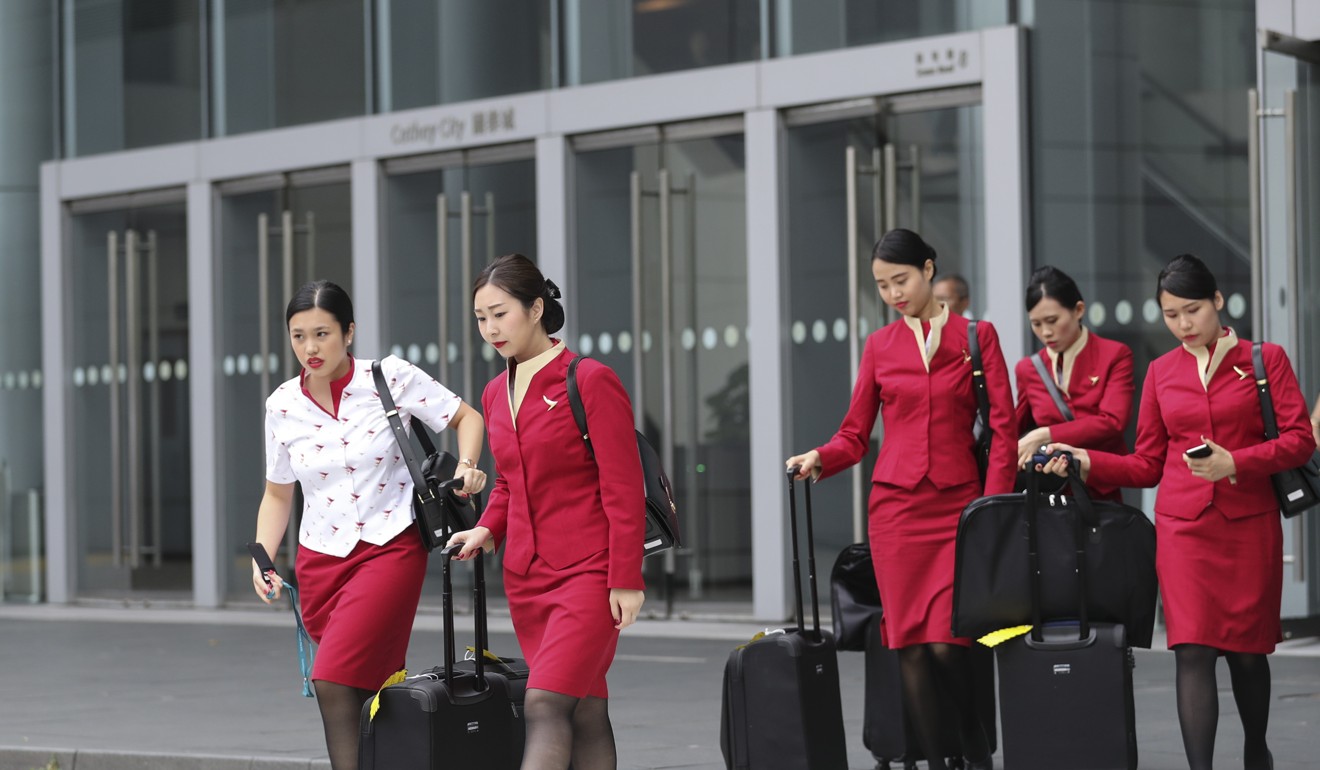
Worst could be over for Cathay Pacific, but beware of tough competition in the skies
The airline may have turned a corner after its big first-half loss, and increased passenger and cargo demand as well as its cost-cutting plan could lift its share price. But Chinese airlines are set to be fierce rivals
The worst could be over for shares in Cathay Pacific Airways after its interim loss of HK$2.1 billion (US$269 million), with the carrier likely to see improved passenger demand, a good performance from its cargo unit, the gradual unwinding of its loss-making fuel hedges and the early effects of its three-year cost-cutting plan, according to analysts.
However buyers must beware of headwinds, including tough competition from Chinese airlines that could continue to drag on the company.
The company blamed the first-half loss on punishing competition and not enough revenue from ticket sales and said it did not expect the operating environment to improve materially in the second half of 2017.
However Jeffries analyst Andrew Lee rated the stock outperform, saying the interim loss was likely the bottom for the airline and the worst was likely to be over.
“Cathay Pacific remains our top play among Hong Kong and Chinese mainland airlines under coverage due to both earnings recovery and valuation,” Lee said.
“We expect its earnings to recover from lower fuel hedging losses as oil hedges expire and from HK$4 billion in cost savings not related to fuel over next three years under it transformation plan,” he said. He forecast that passenger yield, a measure of a carrier’s profitability, to sequentially improve in the second half when demand is seasonally stronger, and predicted that Cathay’s second-half loss would be narrower, with the carrier turning marginally profitable in 2018.
In the first half, Cathay’s passenger yield – the average fare paid per kilometre per passenger – was down 5.2 per cent year on year and passenger revenue dropped 3.9 per cent compared with the same period last year. Cathay also recorded a fuel hedging loss of HK$3.2 billion in the first half of this year.
Earlier this year it announced a plan to cut HK$4 billion in costs over three years.
Separately, Credit Suisse upgraded Cathay to neutral, citing improvements that should gradually emerge from the second half, including expectations of higher passenger yield, stronger cargo demand, and lower fuel price assumptions.
“For the second half, on the revenue side, we believe the passenger business still faces strong competition, but passenger yield decline should narrow, thanks to better premium demand and a low base. And the cargo business should further improve due to sustaining solid demand,” said the investment bank’s analyst Zhai Baoying, in a report.
“On the cost side, management believes early signs of the transformation programme will be visible. Meanwhile, we recently revised down our oil price forecast for the second half to a five per cent yearly increase, which implies easing fuel cost pressure can be expected despite our estimate of HK$3.3 billion in hedging losses in the second half.”

However, Bank of Communications International has retained its sell recommendation for Cathay, saying there is no compelling fundamental reason to buy at the moment.
“We continue to think that the current problem for Cathay Pacific is largely related to revenue, particularly passenger yield, due to competition,” said Bocom International transport analyst Geoffrey Cheng. “At the moment, low passenger yield, substantial fuel hedging losses and continual cost pressures are the headwinds for Cathay.”
He added that the airline’s fuel hedge book will continue to be a drag as the high price of the hedges – about US$80 per barrel – will linger on until the first half in 2019. However, he said the airline’s plan to add more seats in economy class to increase passenger numbers will accrue substantial cost advantages to the carrier by 2019.
The outlook is also tough for Cathay’s Chinese rivals meanwhile. The three carriers – Air China, China Southern Airlines and China Eastern Airlines – saw weak first-half profits, propped up mainly by a stronger yuan currency.In the first half of 2017, the yuan has strengthened 2.5 per cent against the US dollar.
Jefferies’ Lee expects the currency will depreciate marginally next year, and he has an underperform rating on the three.
“Stripping [the foreign exchange gains] out, margins continue to decline, driven by lower passenger yields and higher costs, primarily fuel,” Lee said.
China Eastern recorded a foreign exchange gain of 674 million yuan (US$104 million) in the first half, from a loss of 1.4 billion yuan in the same period last year, while China Southern Airline had a gain of 561 million yuan from a 1.5 billion yuan loss in the same period of 2016 and Air China booked a gain of 1.3 billion yuan from a loss of 4.2 billion yuan last year.
Without the exchange gains, China Southern posted interim core profit down 52 per cent yearly, followed by China Eastern with a 58 per cent drop. Air China suffered the sharpest decline in its core profits, down 60 per cent, mainly due to the losses on the value of its 29.99 per cent stake in Cathay Pacific. Any improvement in the profitability of Cathay next year could benefit Air China.

